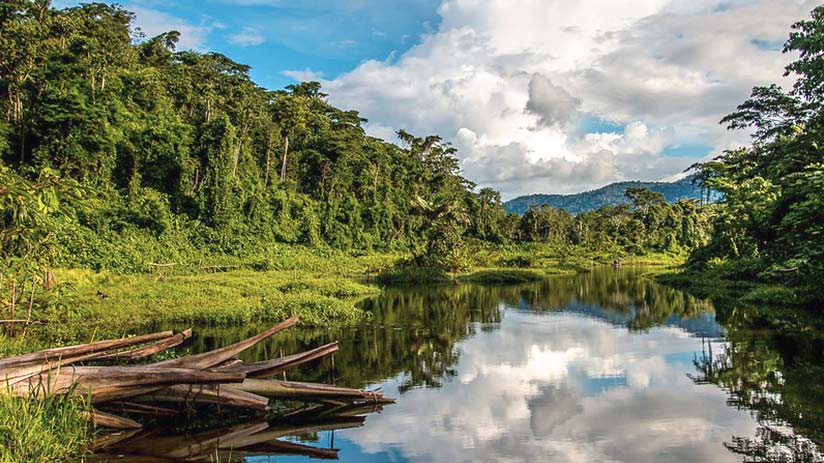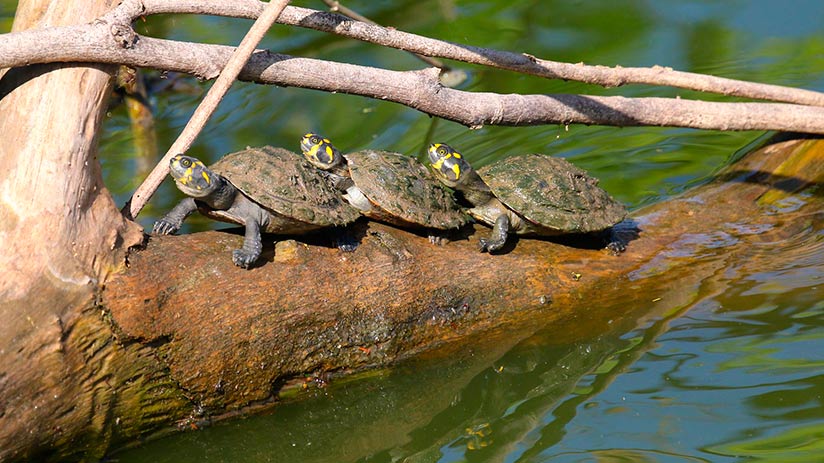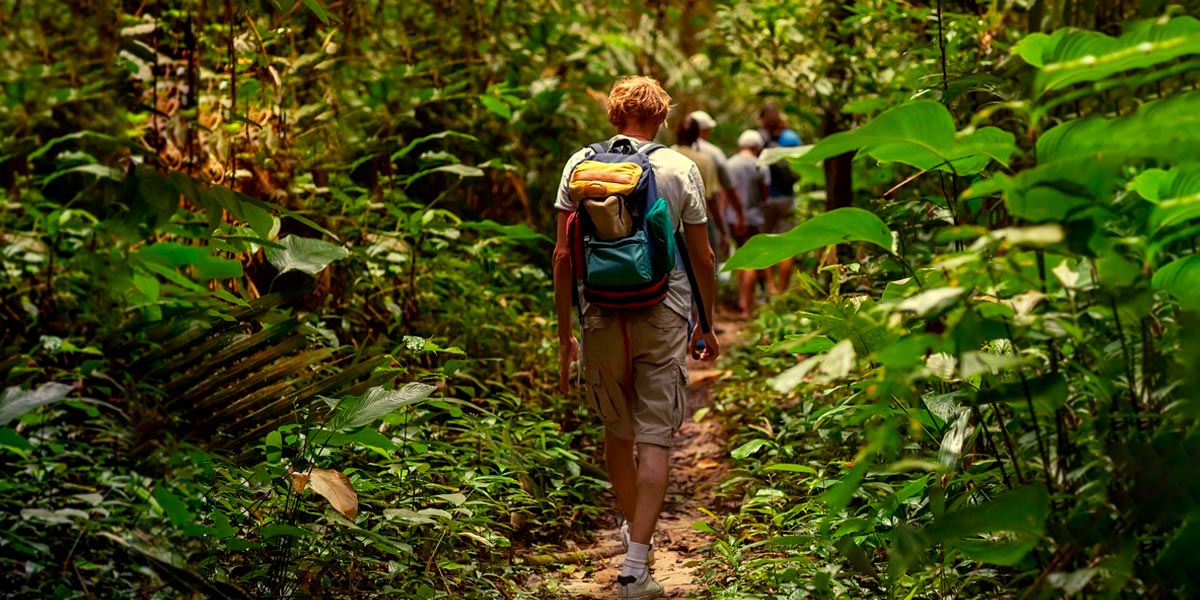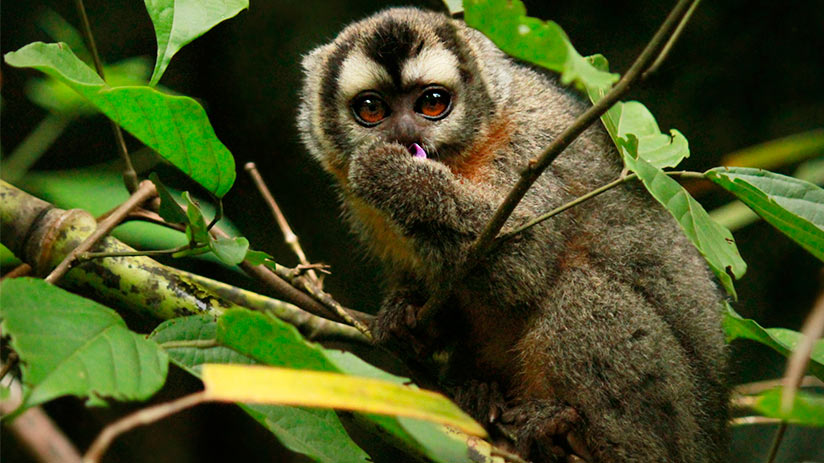

The Manu National Park is the largest protected area in Peru and a core pillar of global biodiversity. With an area of more than 1.7 million hectares, it covers territories from the Andes (Cusco) to the Amazon jungle (Madre de Dios). This vertical integration of ecosystems (from the Puna to the tropical forest) is what creates its stunning variety of flora and fauna. Due to its unmatched biological richness, Manu was declared a Biosphere Reserve (1977) and later a Natural World Heritage Site by UNESCO (1987).
Manu is a key destination for jungle adventures in Peru and is one of the Peru Highlights for naturalists. Its territory has recorded more than a thousand species of birds, hundreds of mammals, and thousands of plants, including species not yet cataloged by science. However, its protection status and geographical remoteness mean that a visit requires strict and specialized planning.
This guide will focus on the Manu Tours Peru, analyzing the different access zones, entry requirements, and essential logistics for organizing a safe and effective expedition in this Amazonian sanctuary.
Manu National Park is located in southeastern Peru, between the Cusco and Madre de Dios regions. This protected area stretches from 300 meters above sea level in the Amazon to 4,000 meters in the high Andean zone, allowing it to host a wide variety of climates, landscapes, and species.
Depending on the tour, access can include road trips, boat navigation, and hikes, which makes the journey more interesting. This location makes Manu a key spot for observing nature and enjoying an adventure in southern Peru.
The National Park of Manu can be reached from Puerto Maldonado or Cusco. Starting from the capital of Madre de Dios, you can choose a river or land route. Access from the imperial city is the most interesting. Despite being a longer route, it allows you to appreciate the different ecological levels, from the Andes to the Amazonian plain.
From Cusco you must hire private land transport to the town of Atalay or Shintuya. Here we rent boats that will take us to the town of Boca Manu, and then to the National Park.
Most visitors come to the national park through tour agencies. I would definitely recommend this option because the guides know their way around and know where and how to best observe animals. On your own, it is a real adventure, and you should have a good car, proper equipment, and be able to speak Spanish.

From Cusco, drive 280 km on the winding road from Cusco towards Paucartambo (about 10 hours by car) to reach the town of Atalaya. From there, continue by boat on the river to the town of Boca Manu, and then cross the Madre de Dios River to enter the park. It is also possible to reach the town of Boca Manu by small plane (expensive!) from Cusco (30 minutes), and from there follow the route described above.
In the district of Paucartambo, you will reach the sector of Tres Cruces. In the early morning, you can see an unforgettable sunrise over a sea of clouds. To get to this natural viewpoint, one must travel from the district of Paucartambo to the Acjanaco checkpoint, a trip of about half an hour by land. After that, it is a half-hour walk to Tres Cruces.
Drive 140 kilometers along the Interoceanic Highway from downtown Puerto Maldonado to downtown Santa Rosa (1 hour, 30 minutes). Then you cross the Inambari River by boat to Puerto Carlos (5 m).

For a spectacular view it is recommended to reach the Tres Cruces viewpoint and appreciate the sunrise, as well as two opposite landscapes: the Andean mountain range and the cloud forest. It is better to go between May and August, when the sky is clear and allows to see the appearance of the sun twice during the same sunrise, due to a phenomenon of nature. The Manu has one of the most renowned research centers for the Amazon: the biological station of Cocha Cashu, as well as an interpretation center in the surveillance post of Limonal.
The National Park has several routes and trails for hiking. They are divided into five zones: Salvador, Otorongo, Pakitza, Limonal and Juárez, where you can visit three impressive lagoons or lakes. These lagoons are surrounded by an important vegetation, inhabited by curious species of animals.
The main activity in Manu National Parktours is flora and fauna observation, being the most representative species of this area the jaguar, the giant otter and the monkey "leoncito", considered the smallest in the world because it weighs only 100 grams. Also, you can see more than 20 thousand species of plants, a thousand species of birds, as well as hundreds of mammals, reptiles, amphibians and fish.
The Manu Tour takes you through one of the richest ecosystems on the planet. In this experience, you can explore an environment that is home to more than 30 million insects, according to SERNANP data, including hundreds of species of ants, beetles, and dragonflies. But the Manu National Park does not only stand out for its fauna: it is also home to native communities such as the Huachipaire, Machiguenga, Piro, Yora, and Yaminahua, whose traditions remain alive in the middle of the jungle.
During the tour, some tours include the possibility of visiting Amazonian communities, always respecting their environment and culture. In addition, in the most remote areas of the park, there are peoples in voluntary isolation, whose existence confirms the depth and natural isolation of Manu.


Exploring the Peruvian Amazon means entering a world full of wildlife, vast jungles, and communities that preserve their traditions. Each tour allows you to discover amazing landscapes and live with nature in its purest state, making the trip an unforgettable experience. Learn about the best tour options to discover the Peruvian Amazon:
Other trips in Peru
If you want to visit Machu Picchu, we recommend you to book your Machu Picchu Entrance Tickets in advance, so you will enjoy your Vacation in Machu Picchu without any problem.